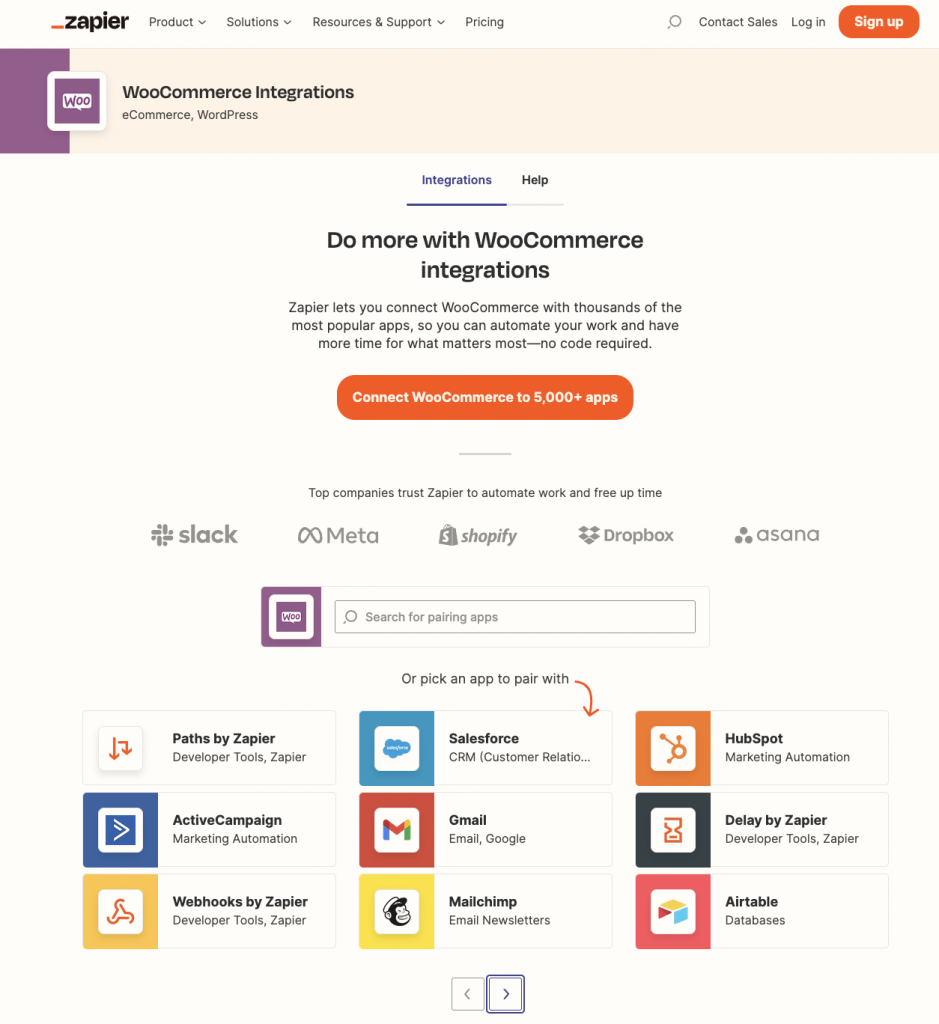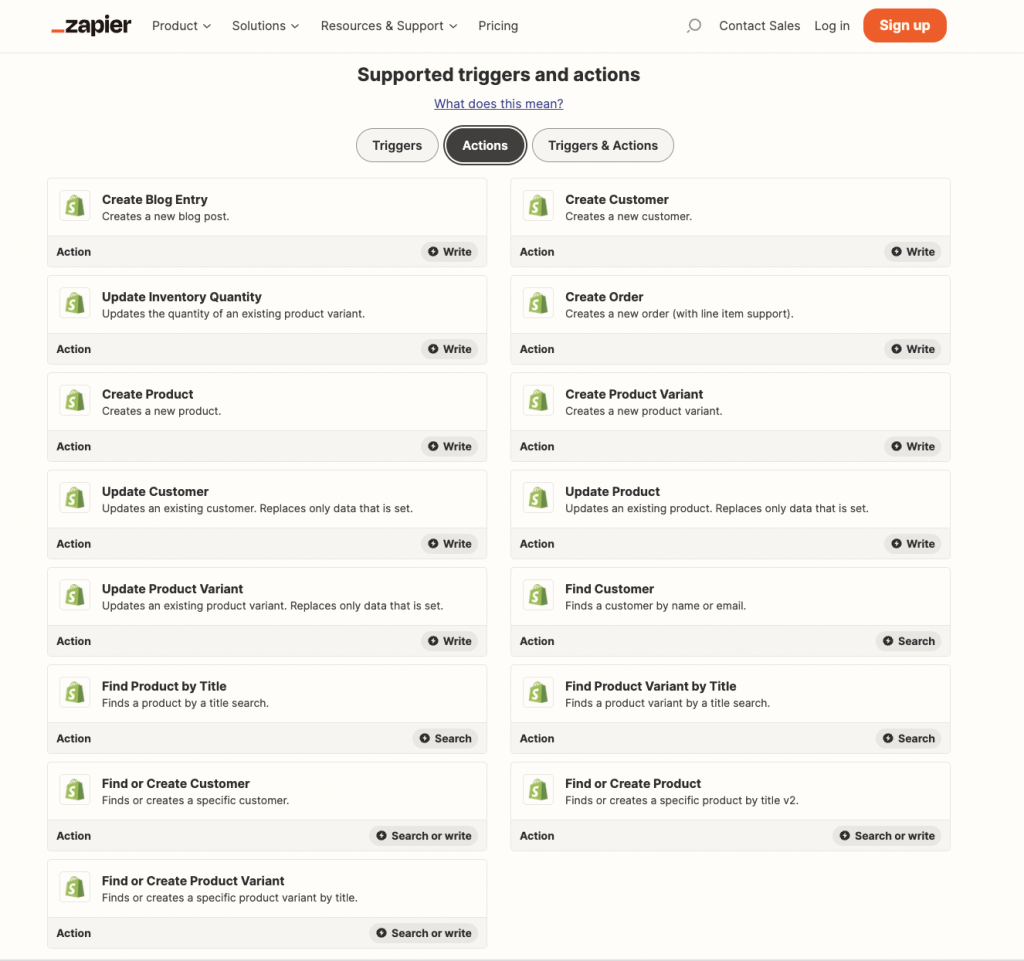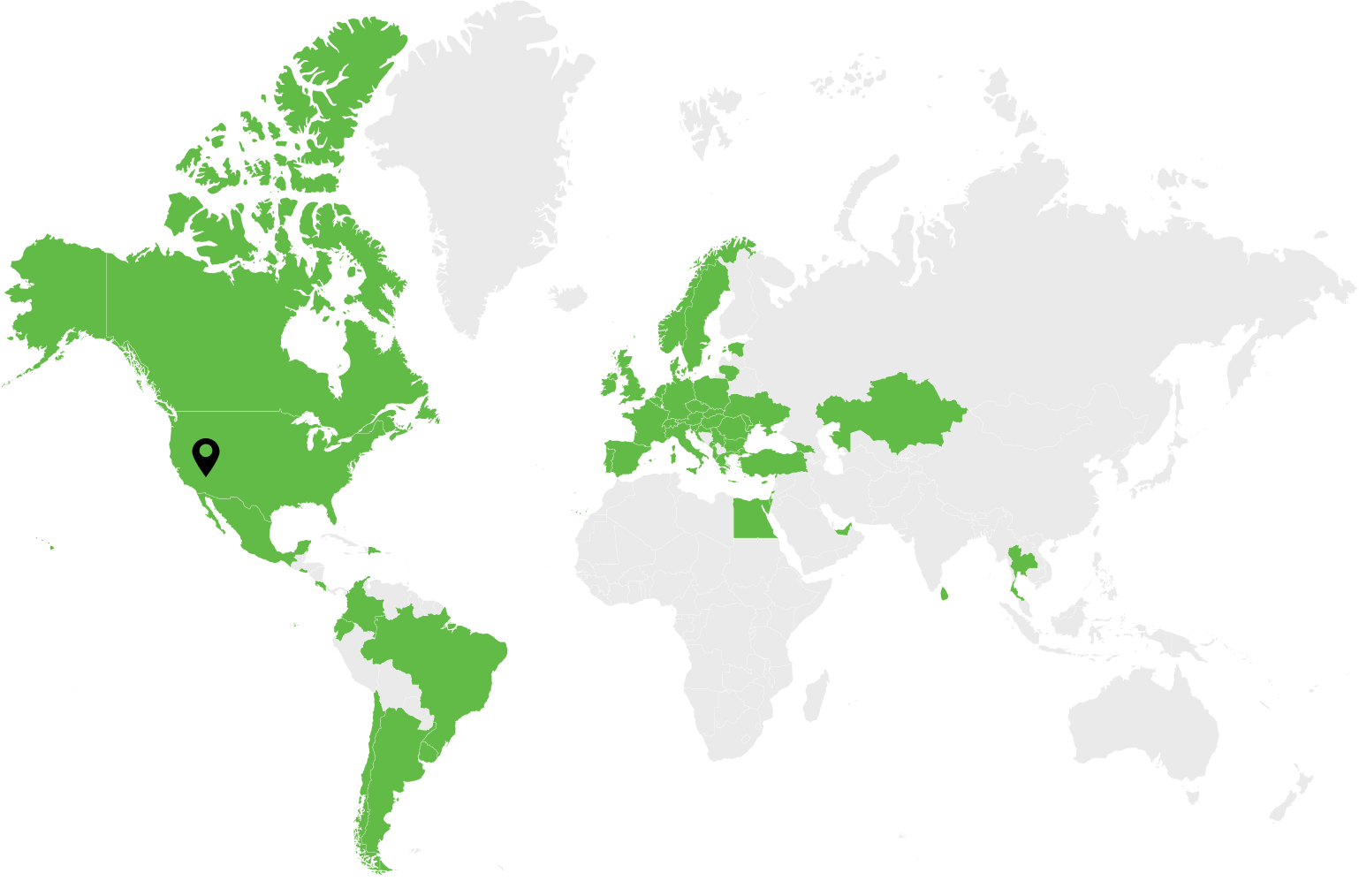A robust, multi-platform eCommerce POS integration, which propelled online sales sky-high, is now a given for post pandemic e-tailers. To be more precise, in 2021, eCommerce generated $870 billion in sales in the US alone. This sizable figure is just a 14.2% increase over 2020, but an impressive 50.5% leap over 2019.
According to eMarketer, eCommerce sales will comprise a 23.6% share of global retail by 2025.
At least two of the top 10 Forbes real-time billionaires are heavily involved with eCommerce, surrounded by moguls in such high-margin economy segments like tech, commodity and telecom. In fact, if you dig deeper, some of them benefit from the rise of eCommerce, too, as the ads or cloud services provider.
When it comes to eCommerce integration with POS, the task is so technically complex and omnipresent, that’s it’s one of those continuous integration projects. It’s common that after the two-way connectivity between major systems is in place, there’s always some tweaks and additions to be made in auxiliary software and hardware solutions.
And major retailers are also e-tailers these days, so the market for eCommerce Point-of-Service integration services is times bigger than just the online merchants’ segment.
What Is an eCommerce POS integration?
eCommerce POS integration is a set of activities [and their result] designed to connect all software and hardware systems used for online sales with Point-of-Sales systems. These Point-of-Sale integration works include architecture design, build of missing code or customized modules, integration works, testing, maintenance, upgrade and optimization.
Which Systems Can Be Integrated for eCommerce?
The two core systems that need to be connected are the Point-of-Sales software system and peripheral hardware devices with the ecommerce platform[s] and website. The full list can include multiple integrations:
- Point-of-Sale software
- Point-of-Sale peripherals: terminals, barcode scanner, cashiers, etc.
- Website with eCommerce module and payment systems
- eCommerce marketplaces [Amazon, Walmart, etc.]
- Warehouse and inventory management software
- Marketing software [email, advertising, tracking]
- Customer management software and loyalty S=systems
- ERP, HRM, and accounting management software
These are the key programming parts of the eCommerce ecosystem that will exchange some data points in real time or at specific intervals.
How POS eCommerce Integration Drives Business
While it’s possible to manage disparate systems and manually exchange chosen data points in spreadsheets, having all software solutions syncing to each other provides efficiency, cuts human errors, and elevates customer services.
These are the direct and indirect benefits of POS integration with eCommerce:
Granular Inventory Management
When a POS system and the website exchange information in near-real time, inventory refreshes right after a purchase has been made, avoiding overselling. Managing refunds and unhappy customers will negatively impact the business in more ways than the immediate financial burden of processing the canceled transaction. Customers can leave negative feedback lowering a business’s online reputation and they may feel reluctant to buy again.
Seamless Customer Experience
While many distinct brands are in the premium segment, your run-of-the-mill offerings are pretty much similar mass market everyday durable products.
The three differentiating points for how you can win your customer are quality, price, and customer services. In the homogeneous mass market segment, you are only left with price and customer experience.
Automation and system integration helps drive better customer experience through multiple touchpoints, from having competitive pricing and personalized promotions to quick delivery.
Multi-Channel Sales
Selling a limited pool of goods across multiple channels [online store, merchant marketplaces, social media, brick-and-mortar shop] is a complex mission. You need to ensure proper branding, inventory control, proper pricing and aligned promotion management.
Online store integration with POS systems enable all these features, providing a seamless homogeneous presence across multiple eCommerce platforms.
Reduced Cost of Human Errors for Business
Manual data exchange and input will result in human errors, delays and mix-ups leading to multiple operational hiccups for an online seller.
When data points flow from one system to another via API automatically, things function as programmed.
Naturally, process automation leads to decreased labor costs and speedier service.
Streamlined Pricing, Promotion and Revenue Management Tactics
If you want to push your slow-moving item, sell perishable products within expiration dates or benefit from the global holiday shopping season, POS with eCommerce integration will help.
Amazon refreshes its pricing 2.5 million times a day, as staying competitive requires an effort in this real-time connected industry. The eCommerce giants’ Automate Pricing Tools is a sophisticated revenue management tool that allows merchants to beat the competition every single second. This technical solution is a good glimpse into how complex eCommerce tools can get.
Promotion management and pricing is a critical advantage for online and offline sellers alike, as over 80% of today’s customers will engage in ROPO [research online and buy offline] or webrooming.
Smoother Omni-Channel Fulfillment
If you specialize in DTC or retail, your customers will appreciate quick delivery and seamless returns.
Curbside pick-up and BOPIS is another alternative that is a new norm for buyers.
Since you have SCM, warehouse, and inventory software modules all synced with your Point-of-Sale and ecommerce, fulfillment gets automated to the extent that you hardly need human involvement.
Actionable Marketing Data to Drive Sales
Big data, specifically when combined with ML and AI algorithms help eCommerce businesses solve many operational, logistical, marketing and business development missions.
When you get to know your demographic metrics, or when you can map best-selling SKUs to a specific GEO zone, day of week, month, or even hour, it’s easier to grow on your successes. Data-driven sales are eventually better sales across all parameters: quality, average check, and customer loyalty.
How to Approach an eCommerce POS Integration?
Whichever advantage spurs an e-tailer to look out for POS eCommerce integration services, the roadmap depends on the status quo [Point A] as well as destination [Point B].
Those starting eCommerce from scratch can opt for integrated solutions, such as Shopify or BigCommerce, which offer Point-of-Sale systems with the online store inherently embedded in the ecosystem. This scenario offers the quickest time-to-market with the least investment, as companies can spin off an online store in a matter of weeks, if not days, for a reasonable monthly subscription fee. Bigger eCommerce players with experience and funding in place are likely to opt for a custom-made online store and respective integrations to keep it uncluttered, agile and flexible.
The businesses looking to upgrade, modernize or customize their existing ecommerce software need to complete an inventory of the existing ecosystem and align it with future ambitions, budgets and priorities. Is it only the POS system with website integration that needs to be addressed? Which online store modules can also be tweaked for the highest ROI? Is it a good moment on the path of the company’s technical evolution to migrate to another cloud service provider or diversify the supply chain?
As e-tailers answer these questions, they will gain a clearer perspective of the steps needed to get from point A to point B quickest and with highest returns.
Two Mission-Critical Success-Shaping Aspects for a POS eCommerce Integration Project
Whichever scenario a company is looking at, two factors have high impact on mission outcomes:
1. Providers: Price/Quality Ratio
Tech Stack
It’s a good time to reevaluate any archaic software or explore newcomers from Gartner Magic Quadrant. Some of the tech stack software is easy to replace but has a critical advantage over the existing solution.
Cloud Service Providers
AWS vs GCP vs Azure vs a myriad of other smaller players is THE big question, which has no right answers. Going multi-cloud is also an option. FinOps best practices need to be considered at each step of the way and become the modus operandi for further continuous savings.
POS Integration Company
If you don’t have tech talent with solid experience integrating your Point-of-Sale system with the website and major eCommerce platforms, consider outsourcing this mission to a more experienced team. An integration project gone wrong may have far-reaching consequences in data loss, improperly registered transactions, goods sold at wrong price points, wrong items being delivered and so on.
On the other hand, an eCommerce savvy extension team joins your inhouse experts, provides expertise, designs an architecture and roadmap, and acts on it in an agreed and elaborate manner.
2. Priorities: Low-Hanging Fruits First
Many business, financial and technical decisions need to be taken during the planning stage in the shift from disconnected POS and eCommerce ecosystem to a fully connected network.
Dev.Pro’s dedicated teams of hospitality software developers always try to sort all technical activities to ensure highest ROI with least risks. For example, when lining up all the software solutions that need to be mapped to a Point-of-Sale tool, we will prioritize those with low-to-medium usage to lower risks, but run-of-the-mill enough so that its learnings are replicable.
When vendors are chosen and priorities are set, selection of the integration method will come up.
WEB API Types Used for eCommerce Integration: SOAP, REST, Graph QL, RPC
TLDR: REST API is the most popular type as it stands for 2023 for new projects, SOAP is archaic due to complexity and slower performance, and GraphQL is the new cool kid on the block.
RPC [Remote Procedure Call]
RPC is the oldest of the types. However, its Google-updated modern version called gRPC is still used by many BigTech companies for message exchange in solutions using Microservices architecture. Facebook, Uber, Netflix, and IBM found the framework useful.
SOAP [Simple Object Access Protocol]
This Microsoft-invented XML-based messaging protocol is still chosen quite a bit, despite its somewhat slower performance compared to newer API types like REST API. Its security is often the reason FinTech and HealthTech companies choose it, as the messages are encrypted with the log. The second advantage that keeps this technology from going extinct is its possibility to keep the history of a chain of transactions and requests, which is widely used in TravelTech, for example.
REST [Representational State Transfer]
This software architectural style will only transfer through HTTP, uses XML or JSON and is easy to call from Javascript. The REST guidelines are often used to create stateless web APIs. Its cacheability, code on demand, layered system, uniform interface and client-system architecture made this technology popular.
GraphQL
GraphQL is the freshest edition to the API syntaxes league. The Facebook team devised it as recently as 2015. It offers a more straightforward way to fetch data using a schema, having a single endpoint compared to REST’s multiple endpoints. However, the learning curve is steeper, so GraphQL is still primarily used by bigger tech companies, while smaller players stick to REST APIs.
Now let’s review what exactly POS ecommerce integration developers do when signed up for the project by a facility with online sales and delivery.
7 Phases of Ecommerce POS Integration
As mentioned above, the flow and roadmap of this eCommerce integration project will depend a lot on what you have at the start and the outcome you are aiming for. These steps are common for most scenarios.
1. Make an Inventory of Your Requirements and Systems
First define your starting point. What do you have now? An online or a brick-and-mortar store? Any accounting software? Loyalty? CRM? Payment systems you use? Hardware? Any marketing automation? What pricing plan are you on? Is your license enough or do you need a better / cheaper one? Are there any new pricing plans? Any new products with better functionality?
Then you need to align what you have with what it is you need to achieve. Are you going multi-channel? Opening a physical store and needing a POS now? Or starting social media sales and need to register sales there, too? Do you have it all but systems are not talking to each other and you lose sales due to understocking, perishable products moving slowly or other merchants outcompeting you on delivery terms? Compile a full list of what you need to the best of your industry knowledge, checking in on the best practices locally and nationwide so you don’t reinvent the wheel.
2. Prioritize Systems and Processes
Technical and financial prioritization are overlapping but different.
From the technical perspective, you need to figure out which of the systems, tools, and services must be connected first. You will need to pick a tool that is used quite often but is not critical for sales. It can be a marketing or email automation tool, for example. When you select such an object, you can try all your processes and establish the procedure for further integrations without risking much. Once you finetune and test all connections, you can then proceed with your key subjects for data exchange.
From the financial point of view you will need to figure out which system upgrade will bring the highest ROI to your business in the shortest term. Will RPA development have the best labor cost saving effect? Will connecting to all major merchants bring the best results per dollar invested? Have you heard of an amazing revenue management and pricing tool that needs to be part of the integrated ecosystem? Which POS vendor fits your case best? Do you need to customize some of the modules and if so what are they? Is a mobile application part of the project, too, and when is it best to start it?
If you know your priorities both technically and financially, you will reduce the risks and increase the chances of early ROI.
3. Elaborate Architecture & API Management
The design phase is when you plan and design which systems are part of your newly integrated ecommerce network, how they exchange data, how often, if the sync is two-way and if it can be done in near real time.
Selecting the API method [REST, GraphQL, SOAP], choosing the cloud service providers, databases, and the tools you are going to need for security and monitoring are some of the key decisions in this step.
A software solutions architect with eCommerce and Point-of-Sale background is the best fit for this job.
4. Purchase Missing Tools & Upgrade Licenses
Once you have the tech stack sorted, it’s time to purchase licenses. Try to embed FinOps practices early. One of the easiest and right costing techniques is asking for a discount or free trial. Offer a candid review in exchange.
These are some of our best pieces on Cloud Cost Optimization and ways to reduce AWS cost.
5. Set Up POS and Online Store Systems
Point-of-Sale integration with your eCommerce website is next. If you decide to connect it via API, webhooks, or you’re a third party tool like Zapier, at this stage your system integration engineers—inhouse or outsourced—will act according to the plan, architecture, and design.
The great thing is that you can do these projects gradually, connecting system by system starting from the less critical tools to minimize the potential damage for a running business.




6. Test All Connections
When the systems are connected, testing takes place to see if all triggers and actions work as expected and sync is timely both ways. Load and stress tests are a must for these works as well as integration tests.
7. Finetune Product Descriptions and Images & Continuously Optimize
As the sales take place, some bugs may still come out. When systems share information, the entire team must be aware of the project and constantly updated on its progress.
It’s also the best practice to provide proper descriptions for new items so that all team members know which field means what in different systems.
When discussing Point-of-Sale with eCommerce integration, consider that hardware is also part of the ecosystem and all financial devices must be PCI compliant, which includes both online security and the physical security of the premises the hardware is used in.
Cost for an eCommerce and POS Integration
Putting an exact price tag on an integration project is next to impossible. But we can provide some ballpark guidance.
A small integration project for a Point-of-Sale system and online store via Zapier with a freelance developer may cost as little as a couple of thousand dollars.
If you need a proper API management system to connect a few major systems, like delivery management, Point-of-Sale, CRM, and the website, you can expect to pay anything from $30–50K+, depending on the number of merchant marketplace and SKUs you need to map.
Top eCommerce POS Systems
These are some of the popular ecommerce Point-of-Sale systems for online sales:
Finding the Right POS Integration Company
If you are a smaller business that needs to integrate their ecommerce website with Point-of-Sale software and hardware, consider checking out the POS sales manager and freelance websites for lower-priced integration services.
Companies with hundreds of SKUs represented on major ecommerce marketplaces may need to consider more complex ways to integrate your inventory, marketing, and dropshipping software with both your website and Point-of-Sales. In which case, look out for vendors with eCommerce experience and/or Point-of-Sale development experience.
Dev.Pro has been supplying technical expertise in Point-of-Sale development to one of the leading PayTech companies in the US, helping create Point-of-Sale products among other projects. With this extensive experience to rely on, we can help your company elaborate their architecture to ensure real-time data exchange for higher sales, efficiency and better customer service.
Discuss your system integration needs with our tech savvy sales team.
POS Integration with eCommerce: Frequently Asked Questions
Yes, you can transfer data from an old Point-of-Sale to a new one. Many cloud Point-of-Sale systems offer easy data migration from your legacy Point-of-Sale and facilitate the transition because they are interested in providing a smooth onboarding experience to a new client.
POS hardware updates are mandatory for security reasons since they carry sensitive financial data. So, businesses need to make sure that they keep their hardware and software devices up to date with recent legal requirements. Newer Point-of-System hardware devices feature Bluetooth and Wi-Fi connectivity and have better UX design that drives associates’ productivity.
Some of the leading Point-of-Sale software vendors with great eCommerce functionality are Lightspeed, QuickBooks, Oracle, Square and WooCommerce.


